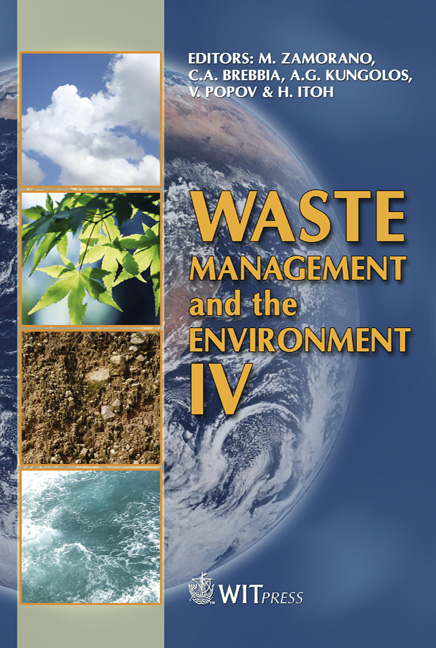Two-phase Pyrolysis Modelling Of Wooden Waste
Price
Free (open access)
Transaction
Volume
109
Pages
8
Page Range
31 - 38
Published
2008
Size
372 kb
Paper DOI
10.2495/WM080041
Copyright
WIT Press
Author(s)
C. Gheorghe, R. Dinu, C. Marculescu, A. Badea & T. Apostol
Abstract
Pyrolysis technology has been demonstrated in recent researches as one of the most effective and environmentally friendly methods for solid wastes pretreatment and energy utilization. Pyrolysis is a process wherein organic materials are exposed to thermal treatment in the absence of an oxidizing agent, resulting in a solid (char), liquid (tar and bio-oil) and volatile gases (CO, CO2, CH4, and H2). A two phase (solid-gas) equilibrium model is proposed in this work in order to simulate the pyrolysis process of wooden biomass (spruce sawdust). The model is able to predict the amount of solid char, the yields and the chemical composition of pyrolysis gas for different process temperatures. In this case, process simulations were done for 600ºC and 800ºC. Aiming the model validation, an experimental campaign was carried out using batch-scale pyrolysis reactor. The simulation results have shown a good agreement with the experimental once. Keywords: biomass, pyrolysis, modelling. 1 Introduction The energy conversion of the biomass is considered like a key action to attend the sustainable developpment objectivs of Kyoto Protocol, because it allows the reduction of the fossil fuel utilization, since the CO2 evacuated through the energy conversion process is compensate by the CO2 absorbed through the life cycle of the vegetals. Biomass, as part of the renewable energy, can achieve zero emission of CO2 and also can help the sustainable development [1]. Wood and other forms of biomass represent some of the main renewable solid energy sources available and provide the only source of liquid, gaseous and solid fuels [2].
Keywords
biomass, pyrolysis, modelling.





